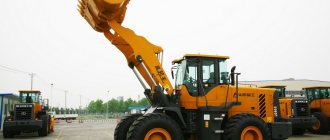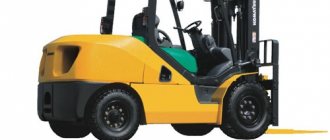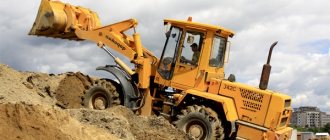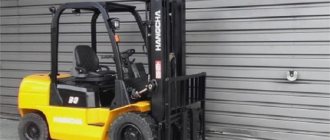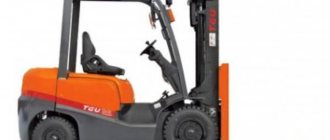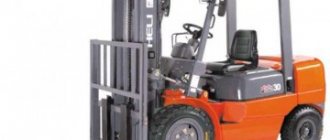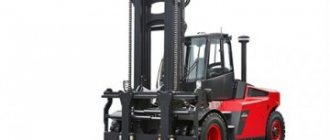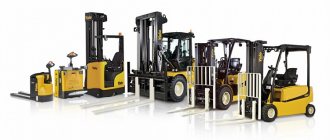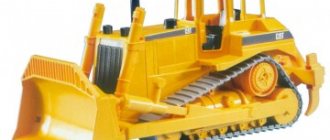Front-end loaders on wheeled chassis are universal special equipment for loading and excavation work. Caterpillar® offers efficient equipment for businesses of all sizes. Wheeled vehicles are designed based on patented technologies and are constantly being improved. Productive equipment with a frontal bucket is indispensable in road construction, public utilities, forestry and agriculture.
Equipment from the manufacturer is reliable, functional and durable. In the global market, the Cat brand is deservedly considered synonymous with quality. Thanks to the development of the dealer network, you can buy a Cat wheel loader in Russia by organizing maintenance and repairs using original spare parts at a regional service center.
The Cat Loader Benefits
- High performance. The manufacturer pays increased attention to the effectiveness of technical solutions. Ergonomic design, intelligent packaging, powerful hydraulics and functional controls combine to enhance your productivity.
- Expanded functionality. For wheeled vehicles, universal and special-purpose frontal buckets of various sizes are produced. The quick coupler makes it easy to attach a fork, grapple, auger, hammer or other attachment to your Cat loader boom.
- Economical to operate. Cat wheeled front loaders are equipped with proprietary engines that meet international environmental regulations. Fuel efficiency is complemented by longer service intervals and easier maintenance.
- Comprehensive support. To sell and service equipment, the manufacturer is developing a dealer network around the world. At the dealer's office you can purchase Cat loaders in installments, arrange repairs and get advice on any issue related to the operation of the equipment.
American Cat front loaders
The American manufacturing company Caterpillar Inc., better known as CAT, is one of the largest manufacturers of construction and agricultural equipment, mechanisms used in mining, Cat front loaders and components for them. In addition, Caterpillar is known as an active developer and manufacturer of reliable and economical gasoline and diesel engines, transmissions, and hydraulic systems.
In addition to the full production of a variety of equipment and mechanisms, Caterpillar is active in the market for providing services in the insurance and financial sectors. Shares of Caterpillar Inc are listed on the New York Stock Exchange and are included as one of the base shares in the calculation of the Dow Jones Industrial Average stock index (Dow Jones Index). This is one of the fundamental indicators of the investment market and stock prices.
The history of the development of Caterpillar (CAT) is an instructive and difficult journey that has seen rapid falls and dizzying rises, innovative scientific developments, technical inventions and unusual design solutions relying on American practicality and cold common sense.
It all started with the production of new tractor designs. The first tractors with steam engines in the 19th century were overly large and cumbersome. They simply got stuck in the soil on the uncultivated fields of America. Benjamin Holt, the founder and ideological inspirer of the new enterprise, was actively looking for ways to solve the problem by simply increasing the diameter of the wheels and their width. In the final version, they reached 2300mm in height and almost 2000mm in width. The tractor also had impressive dimensions, some models reached 14 meters in width. This not only led to the production of equipment to become significantly more complex, but also made wheeled vehicles useless and unnecessary to anyone.
An idea arose to get out of the current situation by laying boards along the tractor route, but the time and financial costs showed the ineffectiveness of this approach. In the course of numerous attempts to cover the wheels with boards, a revolutionary idea was born to replace the wheeled chassis with the usual caterpillar track, with wooden tracks attached to it, which were connected by metal chains.
At the beginning of 1904, the new design triumphantly passed all tests. Charlie Clements, a famous photographer of those years, not without malice, compared the new car to a crawling caterpillar. This association seemed very successful to Holt, and the tractor was named Caterpillar (caterpillar). From that moment on, crawler tractors earned their place in the sun. Various mechanisms began to be mounted on tracked platforms - bucket excavators, cranes, drilling equipment and military equipment. It was tracked military equipment - artillery tractors, tanks and self-propelled guns that determined the future of tracked vehicles, and Caterpillar in particular.
Currently, Caterpillar has production facilities in almost every corner of the planet, including in the Russian city of Tosno. Tractors, pipelayers and excavators are produced there, and Caterpillar front loaders are also beginning to be produced. The most popular loaders in Russia are the Cat 910, Cat 950 H loaders, the Caterpillar 938H, Caterpillar 901B mid-range loaders and the powerful Caterpillar 966H front loaders.
Features and Benefits of Caterpillar Wheel Loaders
Cat (Caterpillar) front loaders stand out among similar equipment due to their low operating costs. These characteristics are due to the use of non-clogging engine cooling systems for all diesel, gasoline and gas models of Caterpillar front loaders, maintaining optimal engine temperature, which guarantees a long service life and leads to reduced costs for maintenance operations of American CAT front loaders.
One of the features that reduces the labor intensity of machine maintenance is the location of the engine air intakes at a considerable height, in the protective roof of front-end loaders. The location of the lubrication points is also very ergonomic and constructive - it guarantees the durability of the machine under the most intense and difficult operating conditions and extreme workloads. Cat wheel loaders have service intervals of at least 500 hours.
Main models of Caterpillar wheel loaders
Among the many models and modifications of Caterpillar front loaders, there are several models that are in high demand and popularity due not only to their perfect design. These are universal models that are suitable for both small enterprises and large industrial associations. They are capable of operating as single machines or as a link in a technological chain.
One such machine is the Caterpillar 950G2 front loader, the technical specifications of which are given below:
- Bucket edge width (cutting) – 2.93 – 3.00 m;
- Engine power – 146 kW (196 hp);
- Bucket capacity – 2.70 – 4.00 m³;
- Load capacity – 12498 kg;
- Overall dimensions – 3400x7970x2890 mm;
- Travel speed with load – 37.0/40.0 km/h;
- Curb operating weight – 17995 kg;
- The permissible maximum unloading height is 2.92 m.
Another well-known and deservedly popular model is, of course, the Caterpillar front wheel loader model Cat 962H. This is a more powerful machine with a bucket volume of 4.3 m³. It is characterized by an improved wheeled chassis, allowing operation in almost complete off-road conditions and in harsh winter conditions, as well as an unloading height increased to 3.5 meters. With its mass of 19520 kg, it has a decent speed of up to 40 km/h. This provides a powerful 158kW engine and a very functional gearbox.
The Caterpillar 972H is a completely new model of front loaders from the American manufacturer, which replaces the 972G Series II loaders. They are equipped with new Caterpillar engines manufactured using ACERT technology. They are 100% EU Stage compliant. Caterpillar's advanced, load-sensing hydraulic system operates more efficiently, delivering more than 7% fuel savings and 20% more lift than earlier models. This reduces cycle times and machine productivity increases significantly in all operating modes.
Major design improvements include electro-hydraulic controls that make simultaneous lifting and tilting of the bucket possible. The machine is equipped with a ladder that slopes 5° forward on the left side of the machine. Maintenance of Caterpillar wheel loaders is made easier by centralized access points to the machine's hydraulic and electrical systems.
Cat wheeled equipment in Russia
is the official dealer of the manufacturer on the Russian market. Our catalog presents new Cat equipment. Transactions are concluded on the basis of a contract. Zeppelin Rusland centers provide information support, assistance in operation and purchasing original spare parts. Machine maintenance is organized in compliance with international standards by certified specialists.
Cat lift truck prices vary by payment method. Purchasing equipment in installments is a popular solution that is easy to implement. Zeppelin Rusland LLC offers convenient financing schemes that allow you to purchase new special equipment at minimal cost. We are waiting for your requests!
Model range and characteristics of CATERPILLAR wheeled front loaders
Caterpillar wheel loaders include skid steer, small wheel loader, medium wheel loader, heavy wheel loader and track loader models.
Caterpillar currently produces H-series front loaders.
The machines are equipped with CAT's own engine. Caterpillar front loaders are equipped with a torque converter, final planetary gearboxes, an electronically controlled automatic planetary powershift transmission, and wet multi-disc hub brakes.
Some models are equipped as standard with a quick-release gripper. These are about 50 items, including asphalt cutters and sweeping brushes.
Operating weights of Caterpillar wheel loaders range from 5.6 tons to 195.4 tons. The engine power is 51-1176 kW. The bucket volume is 0.9-36 cubic meters.
Caterpillar compact loaders are controlled using a low-effort joystick. The equipment is equipped with a coupling, which is also used on skid steer loaders. It allows the use of Cat skid steer attachments on the 904H, 906H, 907H and 908H models.
Low power front loaders are equipped with Ride Control or Ride Control. Models 924H and 930H feature VersaLink linkage, which allows for parallel lifting of tool attachments. The 924Hz and 928Hz models feature a rigid linkage design using Z-arms. The hydraulic system is equipped with load sensors.
Medium power front loaders feature Acert engine technology. The machines are equipped with load-sensing hydraulics and electro-hydraulic controls. The technique is characterized by simultaneous lifting and tilting.
Heavy Duty Wheel Loaders have been designed to match the bucket capacity of on- and off-road trucks.
Caterpillar tracked front loaders are available in medium and heavy duty models. Flywheel power ranges from 110 kW to 178 kW.
The loaders are equipped with an electronically controlled hydrostatic drive, an electro-hydraulic control system with an adjustable magnetic lift limiter. A Caterpillar computer control system is available that allows the operator to interface with the transmission's electronic hydrostatic control system.
A box-section frame has been specially designed for Caterpillar tracked front loaders. It is characterized by high torsional rigidity.
Caterpillar Forklifts (CAT)
The American company Caterpillar Inc., also known as CAT, is a manufacturer of construction, various agricultural equipment, and mechanisms for the mining industry. The company is also known as a manufacturer of high-quality diesel and gasoline engines. In addition to the production of machinery and mechanisms, Caterpillar provides insurance and financial services. Caterpillar Inc shares are traded on the New York Stock Exchange and are included in the calculation of the Dow Jones Industrial Average (Dow Jones). As you know, this is one of the defining indicators of the investment and stock market.
The history of Caterpillar (CAT) is a complex story of ups and downs, technical inventions, scientific discoveries and inventions, combined with common sense and pure American practicality. It all started with the production of improved tractors.
The first steam tractors in the late 1890s and early 1900s were overly heavy and simply sank in mud and sand. Benjamin Holt, one of the founders of the new company, tried to solve the problem by increasing the diameter and width of the wheels. In those days they reached 2.3 meters in height and 1.8 meters in width. The tractor itself also reached enormous sizes - up to 14 meters wide. However, this made the production of wheeled vehicles even more difficult.
One option was to lay wooden planks as the tractor moved, but this cost a lot of money and took a lot of time. Holt also considered the option of covering the wheel with boards. As a result, the decision arose to replace the traditional wheeled chassis with a caterpillar track with wooden tracks. Its components were fastened with iron chains.
In 1904, the new design successfully passed tests. Photographer Charlie Clements compared the new tractor to a crawling caterpillar. Holt liked the comparison, and the tractor was named Caterpillar (caterpillar). Since then, the triumphant march of caterpillar tractors began. Later, other equipment began to be installed on tracked chassis - cranes, excavators, drilling rigs. The creation of tracked military equipment - artillery tractors, tanks and self-propelled guns - was also of great importance for the development of technology.
At the present stage of development, Caterpillar has factories for the production of construction and warehouse equipment all over the world, including in Russia - in the city of Tosno, near St. Petersburg. But mechanical engineering is not the only area of activity of the company. It is known as a major financial player, energy and construction corporation. Caterpillar forklifts are one of the important, but not defining, areas of the corporation's activities. Although this does not detract from the quality of the machines produced. The company's reputation is so high that it is simply impossible to produce low-quality equipment.
Caterpillar forklifts
One of the most important characteristics of Caterpillar forklifts is low operating costs. This is due to the use of a non-clogging cooling system on all diesel and gas models of Caterpillar forklifts, maintaining optimal engine temperatures, which guarantees long service life and reduced maintenance costs for Caterpillar forklifts.
One of the factors reducing the labor intensity of maintenance is the high location of the air intakes in the protective roof of forklifts. Conveniently located lubrication points ensure durability under the most demanding and stressful operating conditions.
Thoughtful design ensures long service life of Caterpillar forklifts. Maintenance intervals for almost all forklift models are within 500 hours.
A striking example of the quality and reliability of the corporation's products is the Caterpillar DP35NT forklift. DP series forklifts from CAT® are machines with a diesel engine. Their carrying capacity ranges from 2.0 to 3.5 tons. The letter combination NT denotes a high level of reliability, safety, performance and ergonomics.
Thanks to innovative design solutions, these machines have a low center of gravity. This ensures stability and stable performance at high lifting heights. The loader mast is equipped with narrow profile shelves, which gives the operator good visibility. Features of the device for damping shocks and jerks of the mast make it possible to confidently work with the load.
The thoughtful design of this loader model and, in particular, the operator’s cabin creates all the necessary conditions for comfortable and productive work.
The machines are supplied as standard, which includes:
- Diesel engine – – 44.1 kW (S4S), 3331 cm3;
- Automatic transmission;
- Hydraulic brakes;
- Pneumatic tires;
- Forks 1070mm long;
- Three-section hydraulic distributor;
- Full coverage.
The main indicators of the technical characteristics of the machine allow us to classify it as one of the most advanced types of forklifts of this class.
- Loader weight – 4770 kg;
- Nominal load capacity – 3500 kg;
- Working lift height – 3m;
- Machine length – 3860;
- Width – 1290mm;
- Travel speed with load – 19 km/h;
- Load lifting speed – 0.43 m/s;
- Engine power – 38 kW.
Other models of Caterpillar loaders
Caterpillar DP15NT is a slightly less powerful model, but also smaller in size, which allows it to be used in conditions of a fully loaded warehouse and for unloading vehicles under conditions of very intensive cargo turnover. It has a lifting capacity of 1.5 tons, is equipped with a simplex two-stage mast, automatic transmission and hydraulic brakes. The two-section hydraulic distributor allows you to work very smoothly when lifting and lowering loads, without jerks or shocks. The loader is equipped with a 24 kW diesel engine.
The intensive development of the company also affected Caterpillar forklifts. The new model range includes both machines with diesel engines and loaders with electric drive. One of this series is the Caterpillar EP16N electric forklift. This is a representative of electric vehicles with a carrying capacity of 1.6 to 2 tons. They are equipped with 48 Volt batteries. They are available in three- and four-wheeled versions, due to which they have increased maneuverability.
The machines are wired using the latest AC technology, making them capable of performing multiple duty cycles in short periods of time. This Caterpillar forklift is designed in such a way that access to the main components is simplified as much as possible. This reduces the time required for maintenance, both scheduled and unscheduled.
The weight of loaders in this series ranges from 3 tons, which, with a low center of gravity, determines its high stability. Maneuverability is determined by a turning radius of 1.9 meters, which allows you to work in narrow aisles and cargo compartments of vehicles.
Caterpillar forklifts are among the highest quality among machines of a similar class. The manufacturer's reputation is the key to their performance.

